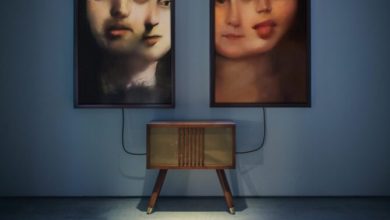In light of light
In reality, all we see is light, but we forget the light and only see the matter which reflects it. Anything in a visual medium is a light hitting a surface and then getting into our eyes. We require light for vision, but it is also essential for a wide range of invisible functions, for example, breathing, growth, balance, psychological health and working effectively. It is a crucial component for relaying information about objects to a set of invisible waves in the brain’s centre.
The other thing I found is that light is a very connecting medium. Once people look at the light, they are subliminally mesmerised. Around the light, people gather, be together and communicate. I aim to experiment with the question: Are the feelings that encourage us to gather a sign of our individuality or is it our human need to gather which is unconsciously predefined by our society?
It is my opportunity to let the public see through a different lens. I want people to forget about the reality and about daily routines so that I can transport them to diverse psychological spaces. They will panic when they notice their everyday tools making a new world. It is to think about the routine of daily life as a way of remembering. I believe our daily stuff still gives us creative tools. It is motivating my memory to produce new ideas which I have never tried.
Light, for me, is the medium through which to try to understand what reminiscence is. I am using light as a new provocative language to highlight some invisible and silent disease but not doom and gloom, I want it to be a positive narrative. In the innocence of light, I found that it illuminates my mystery. It is almost my palette, so that is why I experiment with lots of different light technologies rather than using technology just for the sake of it. I do not want light to be gimmicky, it needs to be beautiful and kind of innately ephemeral and transient.
I often find myself using light and sound to augment space and to create a kind of fabricated reality. My aim is to play with new technology. I am enthusiastic about creating artworks in digital and interactive forms: light sculpture, projection, hologram, film and sound. I want to work with interface devices: projector, screen or my interactive canvas. Light attracts innately; every colour makes different space in a different way of influencing us.
Space is always one of the key components of the work and the container of the light. My work actually changes how I see the space, it is kind of mapping it to create a different type of environment. Each work is built to fit a specific space and it is up there for a while and then it is gone. This is like the idea of it being a very temporary work, a kind of quick gesture filling and manipulating the environment.
On the other hand, the absence of light makes you more attentive to everything else: it leads you to pay more attention to details which cannot be seen in the light; sound, room temperature, texture and atmosphere, but the colour is gone! If there is no light, there is no colour. In a dark room, we use our memory and imagination to create scenes which could make us feel safer. We will focus on the room atmosphere and our internal feeling; but the colours have gone! During sleep, we only see the darkness, and some sketches of stories; sometimes these are realistic dreams, but others are abstracted ones!
Light speed also manipulates my ideas, different distances make it a different work. I show on my balcony, but the scene is different from the other side of the river. I was thinking how to decrease the speed of the light by 100% and more to experiment with the difference. I found that the speed of light can be slowed slightly if it travels through materials such as water or frosted glass. Photons, the particles of light, are travelling unimpeded through free space, it is the interaction between art and science. The works which I make are often set between these disciplines, art and science, to define what light means physically in my practice.

